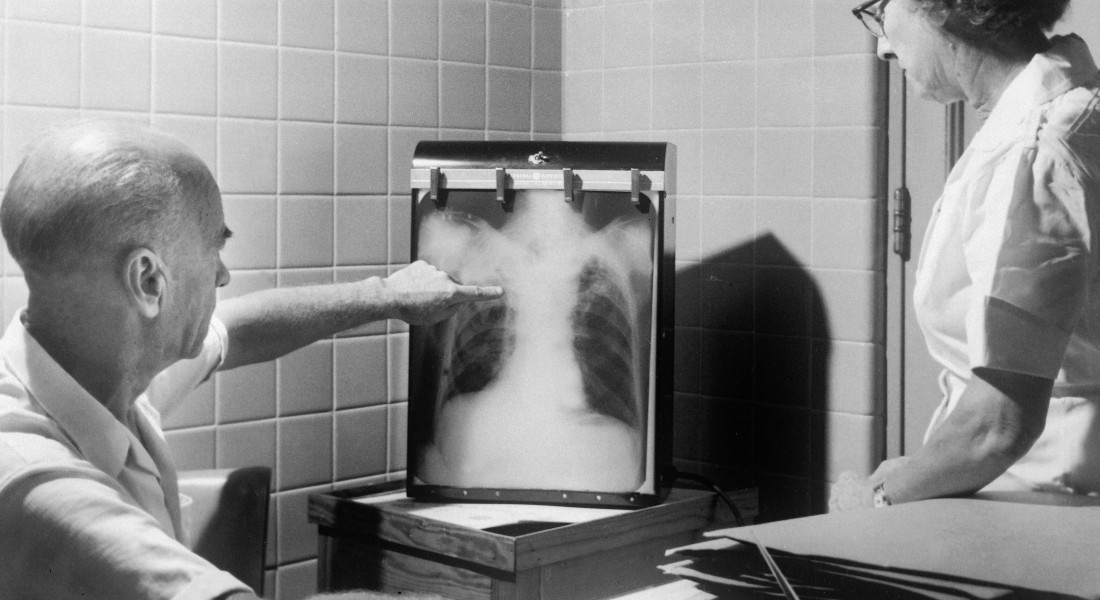Common lung diseases can be difficult to treat – but there may be hope
Pneumonia is one of the most common infectious diseases in the world. But – as shown in a new study from the University of Copenhagen, Rigshospitalet and Hillerød Hospital – our understanding of the disease may have been mistaken. The new knowledge may provide better treatments in the future.

Covid-19 may lead to very serious pneumonia which may ultimately be fatal. But even if you eliminate corona from the statistics, common pneumonia is one of the most frequent and serious infectious diseases in the world. In Denmark alone, 10 to 15 percent of all patients hospitalised with pneumonia that is not caused by covid-19 will die.
The infection is often caused by bacteria and, in some patients, it may be treated effectively with antibiotics. But when the treatment does not work, the reason is often unknown.
A new study from the University of Copenhagen, Rigshospitalet and Hillerød Hospital now indicate that it may be due to the way the bacteria grow.
“First and foremost, it is important to understand that there is acute infection and chronic infection. Chronic bacterial infection is very resistant to treatment with, for example, antibiotics, and it has been the understanding that this was due to the way in which the bacteria clump together in so-called biofilm, a slimy mass that, like a net, keeps together the bacteria and protects them. However, we are now showing that the resistance to treatment is rather due to the rate at which the bacteria grow,” says the study's lead author, Professor Thomas Bjarnsholt.
“Bacteria in an acute infection grow faster and have a higher metabolism than bacteria in chronic infections. And bacteria that grow faster are more susceptible to antibiotics. This is in contrast to a chronic infection, where the bacteria grow more slowly in the biofilm.”
With the new knowledge, the researchers hope to improve the treatment of chronic pneumonia by, for example, increasing the rate of bacterial growth.
“You may do this, for example, with so-called oxygen treatment for most bacteria. If we succeed, we can shorten the time of illness and hospitalisation in these patients,” says Thomas Bjarnsholt.
Danish discovery challenges old paradigm
The study is a collaboration between Costerton Biofilm Center at the University of Copenhagen, Rigshospitalet and Hillerød Hospital. The researchers analysed samples from 150 patients, all of whom had been admitted via the emergency room. The patients were divided into three groups. Those with an acute infection, COPD patients whose lungs are vulnerable and, lastly, CF patients with a chronic infection.
All patients had to cough up lung mucus which was subsequently examined for bacteria. By examining the lung mucus, the researchers also made another discovery that shatters a paradigm that has been prevailing since the 1970s.
“Since Dr William Costerton discovered biofilm formation 40 years ago, it has been the understanding that it only occurs in CF patients who have a chronic infection. But, for the first time ever, we are now showing that there is biofilm formation in all three patient groups. Previously, it was thought that acute infection was caused by so-called single-cell bacteria, i.e., bacteria outside the biofilm. But it is actually found in all the groups,” says Mette Kolpen, who is the first author of the study.
We know too little about lung infections
Together with the knowledge that the effect of treatment is also connected to the growth rate of the bacteria, the researchers now hope that, in the future, an individualised antibiotic treatment may be offered to patients with pneumonia.
“We need to move away from the “one size fits all” mindset, where we blindly treat with antibiotics, without knowing how it affects the bacterial environment in the patients. This is especially important in those situations where there has not been a sufficient effect of the usual treatment, or where a deterioration in the patient's condition is seen. Here, the correct choice and dosage of antibiotics may be a solution,” says Mette Kolpen and continues:
“The study indicates that we do not always use antibiotics for pneumonia in the correct way. We need to know more about the composition of the bacteria in an infection, and maybe there are even some auxiliary bacteria whose role in the infection we do not yet know. We need to fine-tune the treatment, and antibiotics must be used in accordance with the interaction between the bacteria and our immune system.”
Among other things, the researchers will continue the studies by analysing the exact composition of bacteria in their patient samples – this applies to both the type of bacteria and whether they are single-celled or accumulate in biofilm.
“Looking directly into the matter and seeing the composition of the bacterial environment in these patients is an unexplored field. It may sound surprising, but we actually do not know as much about infections as we thought we did. We really want to change that,” says Mette Kolpen.
Read the full study here: ’Bacterial biofilms predominate in both acute and chronic human lung infections’.
Contact:
Professor Thomas Bjarnsholt
tbjarnsholt@sund.ku.dk
+45 20 65 98 88
Press Officer Søren Thiesen
s.thiesen@sund.ku.dk
+45 28 75 29 34
